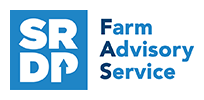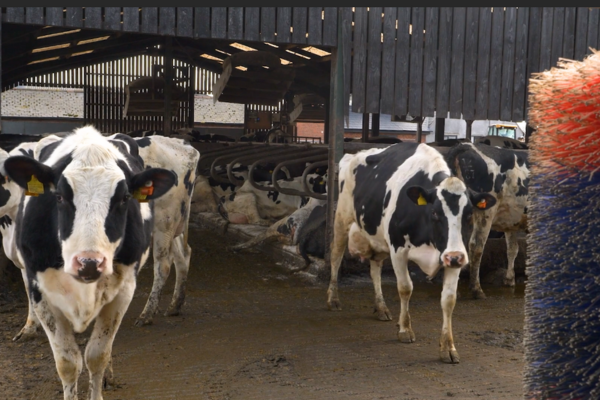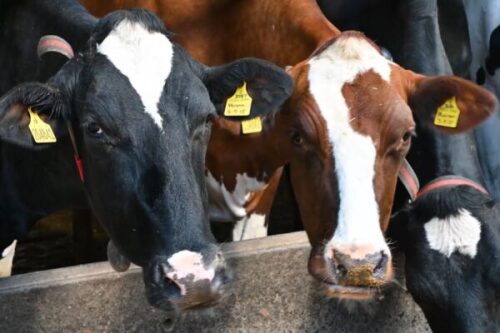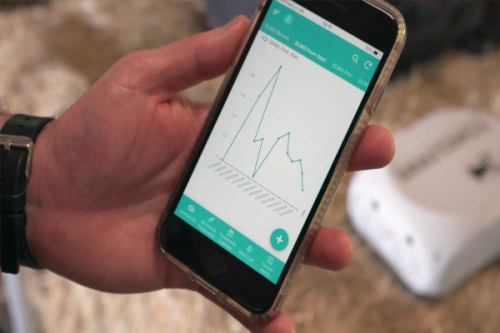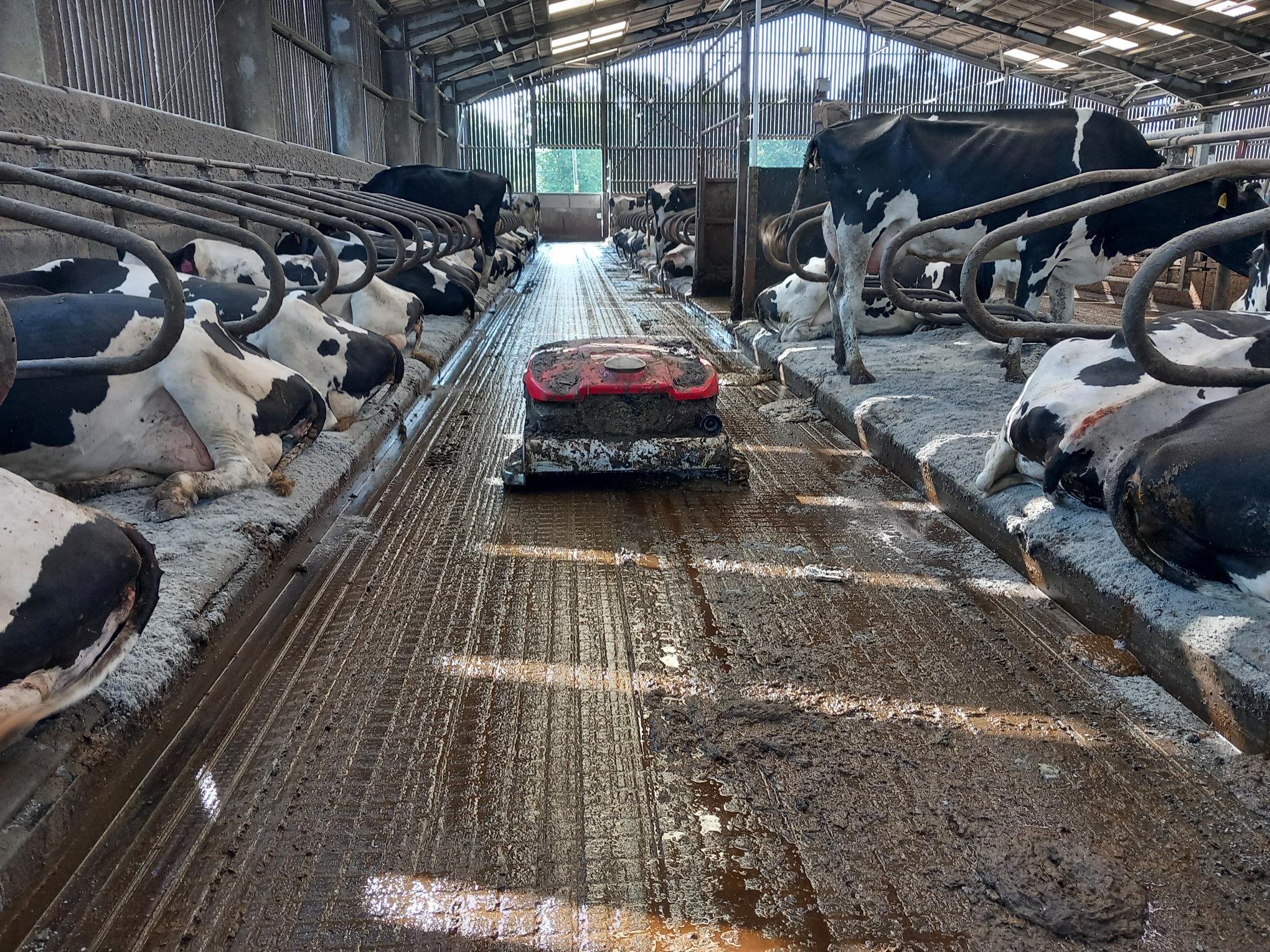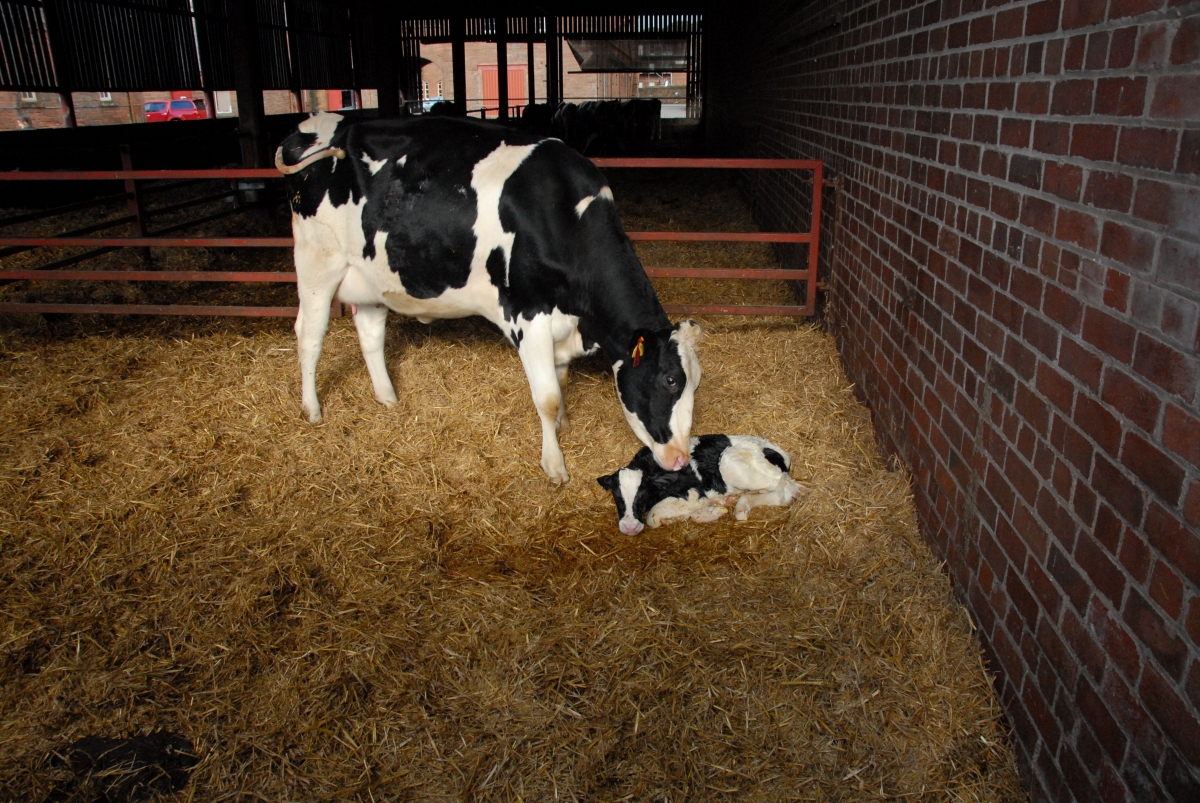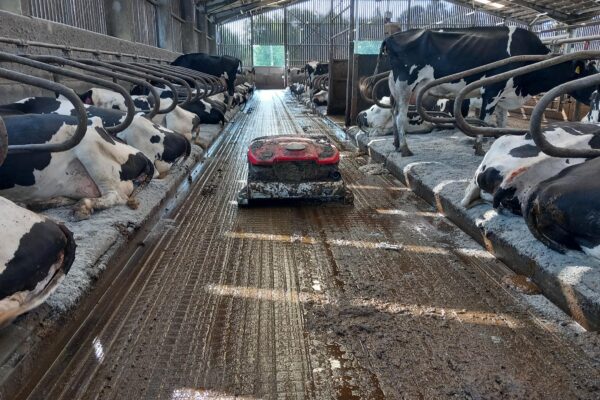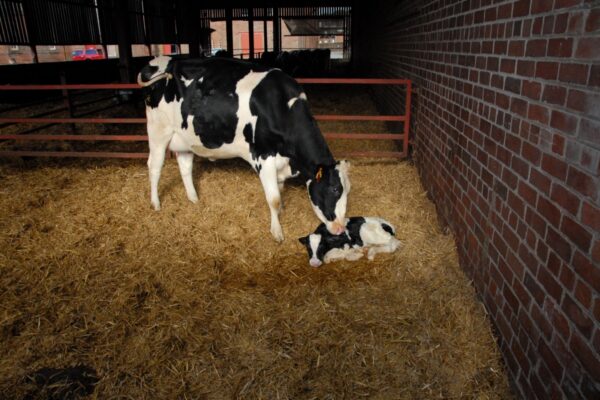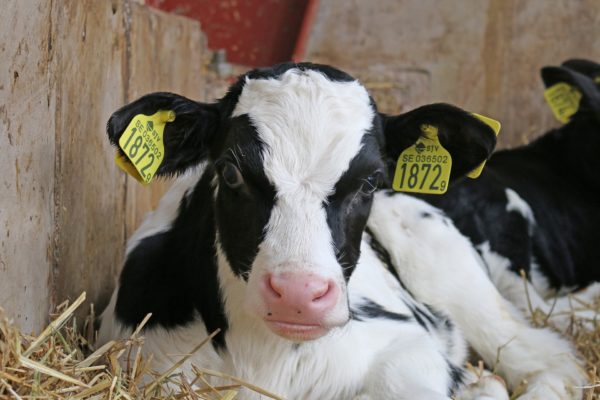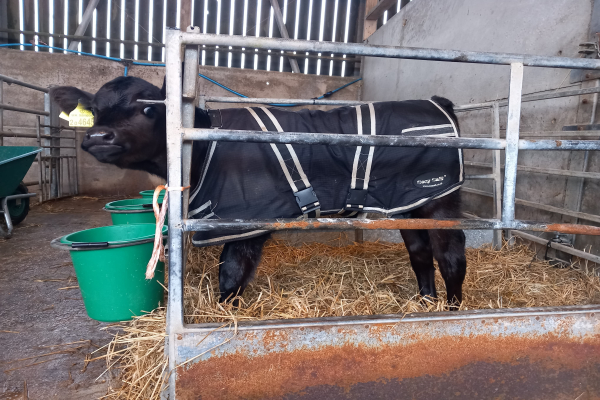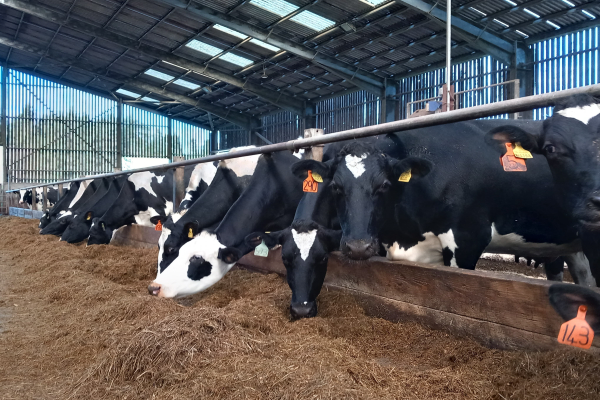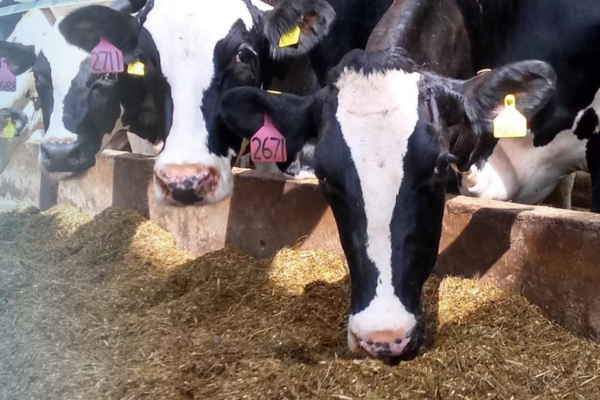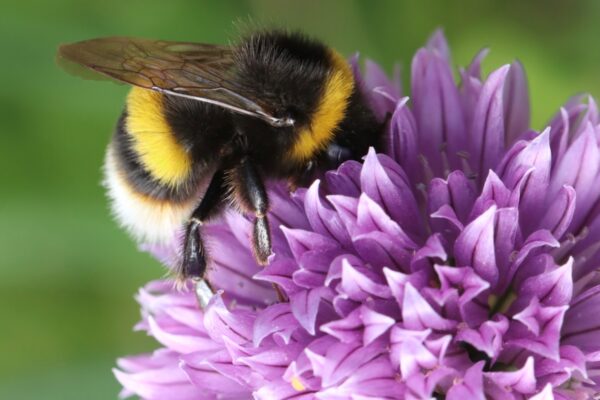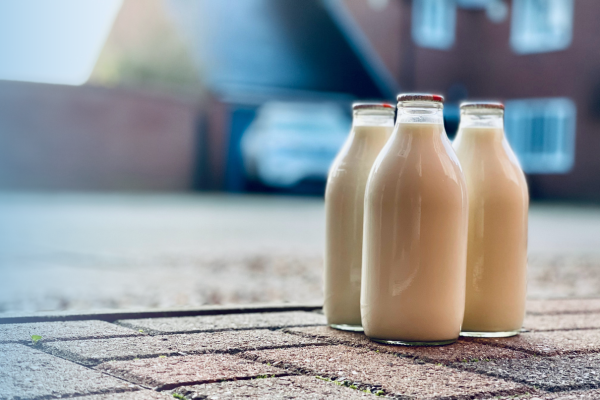Business and Policy September 2025 – Milk
29 August 2025Milk production data
While milk production is just about at its lowest point in the milk year, production is still well above this time last year. Despite many parts of the country suffering from drought conditions and limited grass growth, buffer feeding with this year’s winter forage supplies are helping maintain production. However, this will come at a cost with forage shortages for the coming winter looming, especially south of the border.
AHDB estimates the GB milk volume for July at 1,069 million litres, 46 million litres more than July 2024 (+4.5%). Daily production is currently 33.56 million litres for the week ending 16th August, which is 0.6% less than the previous week, but 5.2% more than the same week in 2024 (an extra 1.65 million litres daily).
Farm-gate prices
Farm-gate prices continue to either hold or marginally improve, with Müller increasing by 0.5ppl from 1st September on the back of stable market returns. The Defra farm-gate milk price for July was 44.29ppl. This represents a 1.0% (0.83ppl) increase on June 2025.
| Milk Prices for Aug/Sep 2025 Scotland | Standard Ltr ppl | ||
|---|---|---|---|
| First Milk2 | 44.85 | ||
| Müller - Müller Direct - Scotland 1, 3 | 42.75 | ||
| Grahams1,4 | 42.00 | ||
| Arla Farmers2 | 47.87 | ||
| Lactalis / Fresh Milk Co.2 | 42.13 | ||
| 1 | Liquid standard litre – annual av. milk price based on supplying 1m litres at 4.0% butterfat, 3.3% protein, bactoscan = 30, SCC = 200 unless stated otherwise. | ||
| 2 | Manufacturing standard litre - annual av. milk price based on supplying 1m litres at 4.2% butterfat, 3.4% protein, bactoscan = 30, SCC = 200 unless stated otherwise. | ||
| 3 | Includes 1.00ppl Müller Direct Premium. Haulage deducted depending on band for 2023 vs 2021 litres, ranging from -0.25 to -0.85ppl. | ||
| 4 | Graham’s ‘A’ milk price | ||
Dairy commodities & market indicators
Apart from skim milk powder, which rose by 1% for August, butter, cream, and mild cheddar fell by 2%. Being the holiday period, trade in August has been quiet.
While UK stocks of butter are still reported to be tight, lack of export demand on the back of improving EU milk volumes and favourably priced New Zealand and US butter has put downward pressure on the UK wholesale price.
The mild cheddar price continues to fall, having been on a downward trend since April. Strong milk volumes coupled with weak buying demand have negatively impacted prices, and stocks of both mild and medium cheddar are starting to build. However, sellers are not keen to drop their price to shift more product, making sure that their manufacturing costs are covered. As a result, both market indicators AMPE and MCVE moved down from last month, 0.31ppl and 0.6ppl, respectively. The Milk Market Value indicator also dropped 0.54ppl to 41.64ppl for August, the 5th consecutive fall since April.
There was little movement in the latest GDT auction on 19th August with a small decline (-0.3%) in the average price across all products, reaching $4,291/t. The biggest drops were in mozzarella, down 2.7% to $4,447/t and SMP down 1.8% to $2,756/t. Whole milk powder saw the biggest rise from the last auction, up just 0.3% to $4,036/t. With global milk supply increasing and New Zealand expecting strong spring production (August to October), global markets could start to soften as we head into the winter.
| UK dairy commodity prices (£/tonne) | Aug | Jul | Feb |
|---|---|---|---|
| 2025 | 2025 | 2025 | |
| Butter | 6,050 | 6,150 | 5,920 |
| Skim Milk Powder (SMP) | 1,990 | 1,970 | 2,020 |
| Bulk Cream | 2,730 | 2,774 | 2,626 |
| Mild Cheddar | 3,830 | 3,890 | 3,960 |
| UK milk price equivalents (ppl) | Aug | Jul | Feb |
|---|---|---|---|
| 2025 | 2025 | 2025 | |
| AMPE | 42.16 | 42.47 | 42.00 |
| MCVE | 41.50 | 42.10 | 43.25 |
Great British Calf Week
The fourth annual Great British Calf Week is set to take place between from 10th – 18th September. The initiative, which is organised by AHDB and the Calf Action Network, aims to promote best practice in managing calves and drive improvements across the supply chain through a series of farm walks, on-farm demonstrations, and webinars, with the week kicking off its launch at UK Dairy Day in Telford on 10th September. For more information on the week’s events please visit: https://ahdb.org.uk/gb-calf-week
Post heat stress effects
There have been many periods of high temperatures this summer when dairy cows will have been under heat stress. While a drop in feed intake and therefore, milk yield are obvious signs of heat stress; longer-term effects on fertility and lameness may not yet be evident and are something to be aware of.
In a recent Dutch study, clear impacts were seen on conception rate (-10%) and the following intervals:
- Calving to first insemination (+6 days).
- First to last insemination (+5 days).
- Calving interval (+12 days).
When cows are heat stressed, they reduce their lying time by up to 3 hours/day and stand more to dissipate heat. The knock-on effect is increased risk of sole haemorrhages or sole ulcers, which can occur around three months after the period of heat stress. This is worth bearing in mind if mobility scores and lameness treatments are poorer this autumn.
Lorna MacPherson, lorna.macpherson@sac.co.uk
Sign up to the FAS newsletter
Receive updates on news, events and publications from Scotland’s Farm Advisory Service
